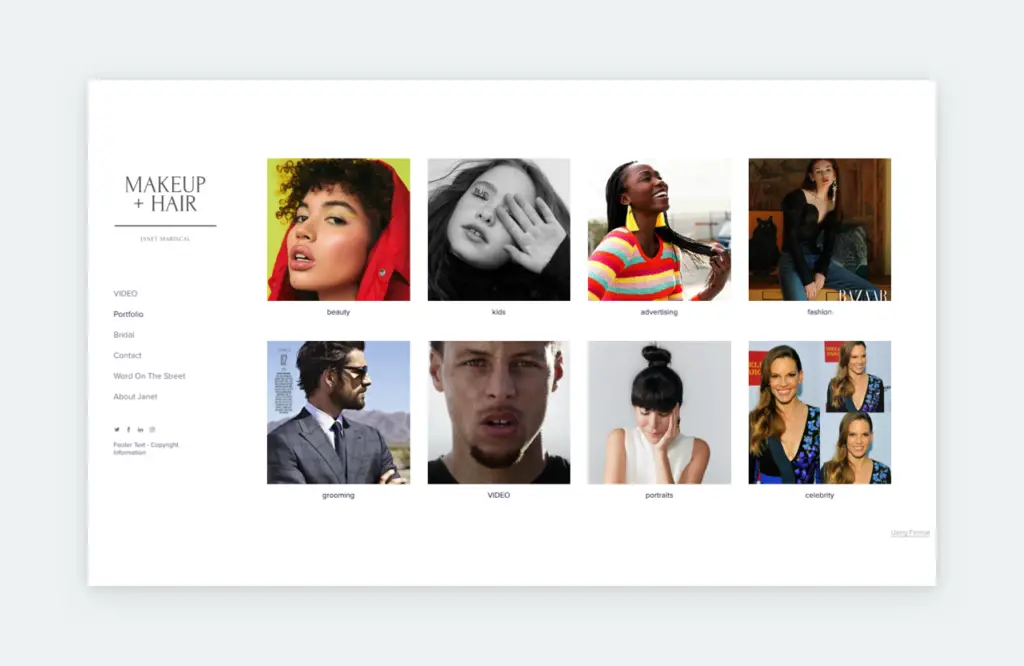Optimizing Online Portfolios and Creative Work with CDNs

What is a CDN?

A content delivery network (CDN) is a geographically distributed network of servers that store and deliver static content, such as images, videos, and HTML files. By caching content closer to users, CDNs reduce latency and improve the delivery speed and reliability of web pages.

Benefits of Using CDNs for Online Portfolios and Creative Work:
- Faster load times: CDNs reduce latency, resulting in faster page load speeds and improved user experience.
- Improved availability: By distributing content across multiple servers, CDNs ensure that your portfolio is always available, even during peak traffic.
- Increased scalability: CDNs can handle large traffic spikes and fluctuations without slowing down your website.
- Reduced bandwidth: CDNs cache content, reducing the bandwidth required to deliver your pages.
- Enhanced security: CDNs can provide security features such as SSL encryption and DDoS protection.
Choosing the Right CDN:
Consider the following factors when selecting a CDN:
- Location and availability: Choose a CDN with servers in locations where your audience is likely to access your portfolio.
- Performance and reliability: Look for a CDN with a proven track record of high performance and uptime.
- Features and support: Choose a CDN that offers features such as image optimization, video streaming, and 24/7 technical support.
- Pricing: Compare the pricing models and packages offered by different CDNs to find one that fits your budget.
Optimizing Online Portfolios and Creative Work with CDNs:
- Configure your CDN: Setup your CDN to cache the static content on your portfolio, such as images, videos, and CSS/JS files.
- Use CDN URLs: Update your portfolio’s code to use the CDN URLs for all static content.
- Optimize images: Compress and resize images to reduce their file size and improve load times.
- Enable browser caching: Configure your server to cache content on users’ browsers, further reducing load times.
- Monitor performance: Use tools such as Google PageSpeed Insights to monitor the performance of your portfolio and identify areas for improvement.
Additional Tips:
- Consider using a CDN that offers image optimization services to automatically optimize your images for faster delivery.
- Use a combination of image formats, such as JPEG, PNG, and WebP, to balance file size and image quality.
- Optimize your CSS and JS code to reduce its weight and improve load times.
By optimizing your online portfolio and creative work with a CDN, you can enhance user experience, improve availability, and showcase your work in the best possible light.## Optimizing Online Portfolios And Creative Work Through Cdns
Executive Summary
Content delivery networks (CDNs) are a powerful tool for optimizing the delivery of online portfolios and other creative content. By distributing content across a globally distributed network of servers, CDNs can improve load times, reduce bandwidth usage, and enhance the user experience. This article provides a comprehensive guide to using CDNs to optimize online portfolios and creative work, covering key concepts, benefits, and best practices.
Introduction
In the modern digital landscape, online portfolios have become essential for showcasing creative work and building professional credibility. However, delivering this content efficiently and effectively can be a challenge, especially for large files such as videos, images, and interactive experiences. Content delivery networks (CDNs) offer a solution to these challenges, providing a reliable and scalable platform for delivering content to users around the globe.
FAQs
Q: What is a CDN?
A: A CDN is a distributed network of servers that delivers content to users based on their geographic location and network conditions.
Q: Why should I use a CDN for my online portfolio?
A: CDNs can improve load times, reduce bandwidth usage, enhance security, and provide global reach for your online portfolio.
Q: How do I choose the right CDN for my needs?
A: Consider factors such as pricing, performance, features, and customer support when selecting a CDN.
Key Subtopics and Features
Performance and Reliability
- Fast load times: CDNs cache content on servers located near users, reducing latency and improving load times.
- High availability: CDNs use redundant servers and load balancing techniques to ensure content is always available, even during peak traffic.
- Scalability: CDNs can automatically adjust their capacity to handle increased traffic, ensuring consistent performance even for large files and high-traffic events.
Bandwidth Optimization
- Content caching: CDNs store frequently accessed content on edge servers, reducing the need to fetch it from the origin server and saving bandwidth.
- Data compression: CDNs can compress data using techniques such as GZIP and Brotli, reducing file sizes and bandwidth consumption.
- Image optimization: CDNs can automatically resize and optimize images for different devices and display resolutions, further reducing bandwidth usage.
Security and Privacy
- Data encryption: CDNs encrypt data in transit and at rest, protecting it from unauthorized access and interception.
- SSL/TLS support: CDNs support SSL/TLS certificates to ensure secure communication between the CDN and users.
- DDoS protection: CDNs can mitigate DDoS attacks by detecting and absorbing malicious traffic, protecting your portfolio from downtime and data breaches.
Geographic Reach and Global Distribution
- Edge servers: CDNs have edge servers located in multiple locations around the world, ensuring content is delivered from the closest server to users.
- Geolocation routing: CDNs automatically route traffic to the optimal edge server based on the user’s location, minimizing latency and improving user experience.
- Multi-CDN strategy: Using multiple CDNs with complementary strengths can provide redundancy and enhance global reach.
Customization and Control
- Customizable caching policies: CDNs allow you to configure caching policies based on content type, file size, and other criteria.
- Content management: CDNs provide tools for managing and updating content, including versioning, purging, and access control.
- Analytics and reporting: CDNs offer analytics and reporting tools to track performance metrics, identify bottlenecks, and optimize content delivery.
Conclusion
By leveraging the power of content delivery networks, you can optimize the delivery of your online portfolio and creative work, ensuring fast load times, reliable performance, and a seamless user experience. Choose a CDN that meets your specific requirements, implement best practices for content optimization, and monitor performance metrics to continuously improve the delivery of your creative content to a global audience.
Keyword Tags
- Content delivery networks (CDNs)
- Online portfolio optimization
- Bandwidth optimization
- Security and privacy for creative work
- Global content distribution
